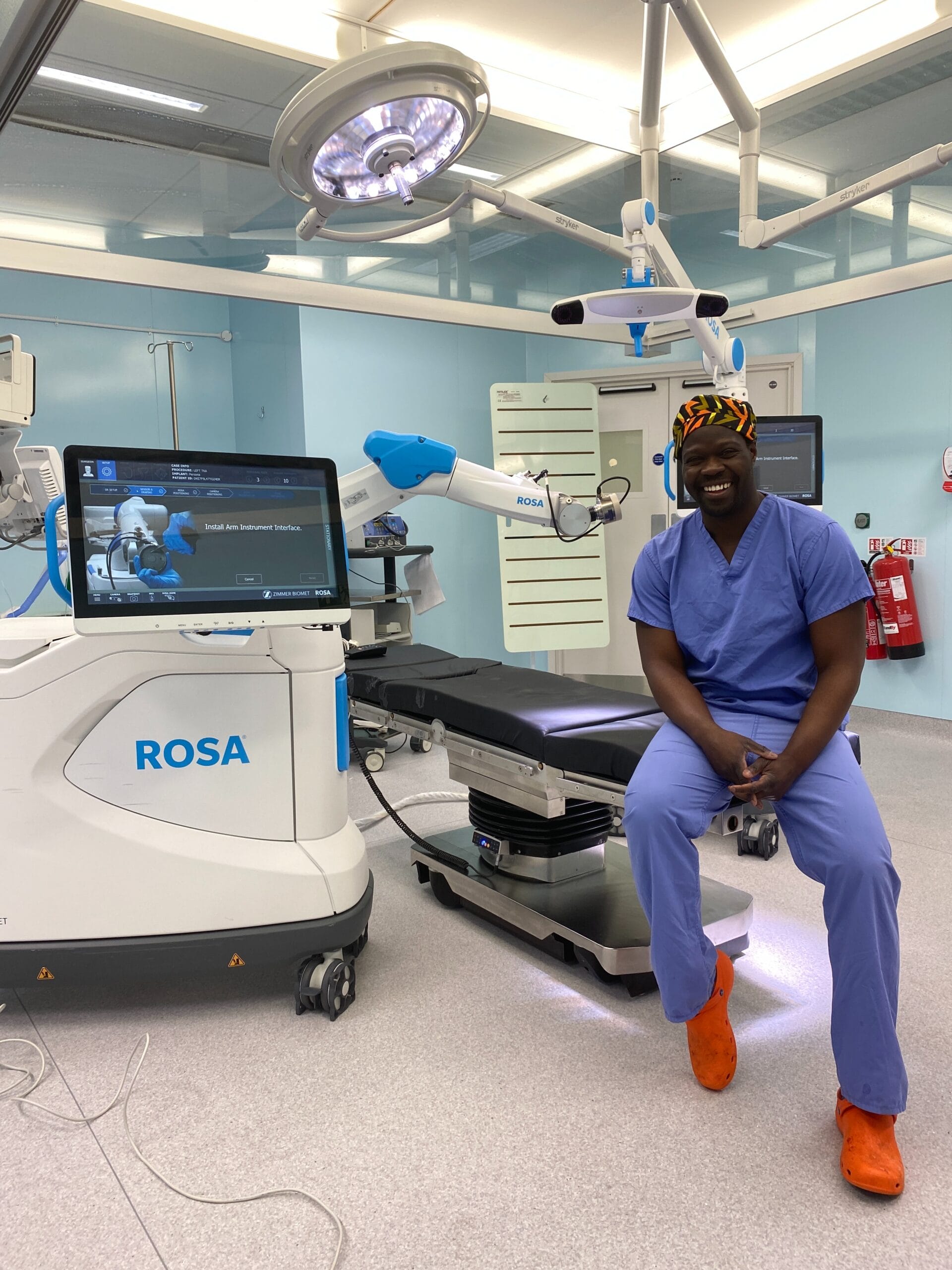By Consultant Orthopaedic Surgeon Mr Sam Rajaratnam FRCS (Tr&Orth)
Osteoarthritis of the knee is a very common cause of knee pain, the feeling of the knee ‘giving way’ and swelling.
Whilst conservative treatment including pain killers, steroid or cartilage protein injections and physiotherapy can be helpful in the early stages, most people with Osteoarthritis of the knee will eventually require knee replacement surgery.
What does knee replacement surgery involve?
Knee replacement surgery has advanced tremendously over the last 30 years and is now one of the most successful operations performed throughout the world. The National Joint Registry recorded 70,000 knee joint replacement procedures are performed in England annually. In years gone by, the replacement itself formed a hinge to the knee joint, but modern knee replacements are surface replacements only. They work by removing the arthritic surface of the knee and capping it with an artificial surface. It is custom fitted to the patients’ anatomy by an expert surgeon.
Modern replacement design allows an excellent range of motion once the patient has fully recovered. Generally, a low dose spinal anaesthetic allows the patient to start moving their knee on the same day of the joint replacement and start walking either on the same night or the next morning following surgery. Most patients are able to return home having been able to climb up and down a flight of stairs safely within a couple of days of their joint replacement. It is very important that the patient continues to exercise their knee after discharge home.
The Horder Centre is proud of achieving some of the best National results following Knee Replacement surgery each year, with extremely low rates of complications. The overall patient satisfaction rate of a well done joint replacement with a rapid recovery programme is in the region of 94%, with the majority of patients being able to walk long distances, play golf, cycle, swim and lead an active lifestyle and a life without pain.
Enhanced recovery programme
As techniques and processes have developed, expert centres throughout the UK have seen improved results of the modern knee replacement through the Enhanced Recovery Programme. The Horder Centre is a leader in enhanced recovery following knee replacement surgery and the best results are gained by careful surgery and a streamlined approach to the pre and postoperative rehabilitation.
Horder Healthcare Enhanced Recovery Programme
In this video, Consultant Orthopaedic Surgeon Mr Sam Rajaratnam explains Horder Healthcare Enhanced Recovery Programme. The Programme is designed to get the best results for patients who have had knee replacement or resurfacing surgery, allowing them to get back to a full and active life post surgery.
The most important components of the Enhanced Recovery Programme are as follows:
- A comprehensive pre-operative meeting with a Consultant that specialises in knee surgery to help with their understanding of the process.
- Excellent verbal and written information to ensure the patient is fully prepared
- Optimising the patients’ health and fitness prior to surgery i.e. nutritional state, exercise programme and minimising any medical conditions.
- Use of the latest high flexion knee implants during surgery.
- Care from an expert theatre team that implant hundreds of knee replacements annually with excellent results.
- Use of an advanced anaesthetic technique to optimise pain control after surgery. Local anaesthetic is used to infiltrate the tissues so that the patient is not in pain immediately after surgery.
- A co-ordinated post operative, early rehabilitation programme involving the surgeon, nurses, physiotherapists (using state-of-the-art gym facilities available at The Horder Centre).
- The most important factor in the enhanced recovery programme following a knee resurfacing/ replacement procedure is a motivated patient who is keen to exercise their knee as this will gives the best outcome following surgery.
What makes Horder Healthcare unique
Horder Healthcare is committed to providing the very best quality of care for our patients and customers. We are continuously working on improving and reducing risks and this is reflected in our consistently high CQC results, patient satisfaction questionnaires and minimal levels of infection.
We are a charity
We reinvest our profit to benefit more people and help us achieve our aim of advancing health.






